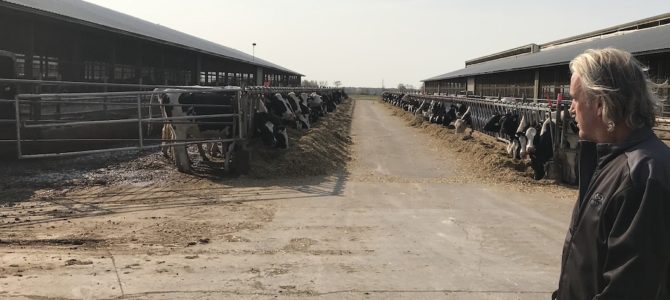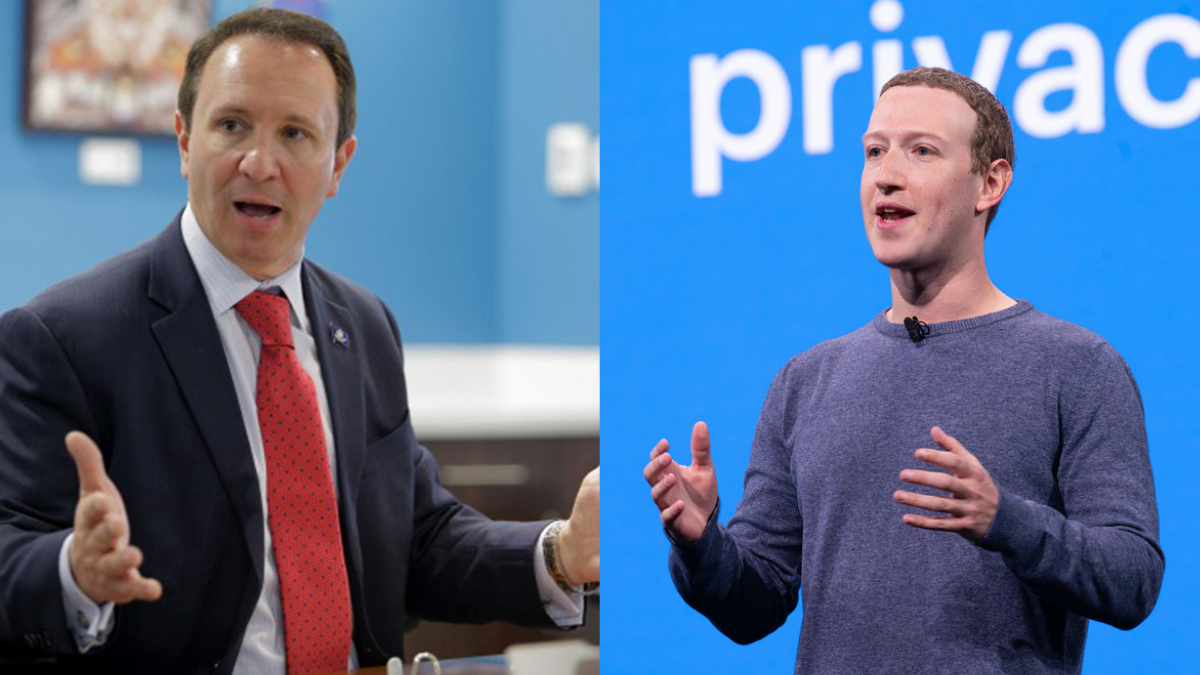
EASTERN WISCONSIN — Rural Wisconsin is crossed with state highways, but you might not recognize them. Two-lane country roads dotted with red barns, granaries, and farmhouses, where passing is nearly always permitted if you feel the urge to tear around the loaded semis and tankers that rule these parts.
Shiloh Dairy is nowhere near the freeway, but Route 10 will take you within a stone’s throw. Nestled into the rolling countryside of Wisconsin, 25 miles west of Lake Michigan and the same south of Green Bay, Gordon Speirs keeps more than 4,000 head of cattle here.
A third-generation dairy farmer, at 57 he falls just one year below the average age of an American dairyman. Speirs emigrated to the United States from Alberta, Canada in 2003 (“it’s hard to be successful in a socialist country”), settling here in the heart of Wisconsin dairy country with about 600 cows. Over 18 years, he’s grown his farm into a large industrial operation, producing 220,000 pounds of milk daily, and served a term as president of the Dairy Business Association.
Speirs walks us through the farm, explaining how they feed the animals, house and care for them according to age, manage the manure pond, and of course milk the cows on a strict schedule, three times a day. He also takes us past a construction crew building two huge silos for methane capture—part of a scheme to create renewable energy from the methane produced by his cows to sell to consumers in California and elsewhere.
With approximately 8,000 different operations, dairy farmers are an important constituency in Wisconsin, which saw enough rural counties flip Republican in 2016 to give Donald Trump a narrow, 22,177-vote victory and buck a somewhat counterintuitive tradition of rural Wisconsinites voting Democrat. The dairy industry leans right, Speirs tells us, and the issues that matter most are those that bear on business: trade, immigration, and government regulation in its many forms. “We are issues-based voters,” he says, and the issues that motivated dairymen in 2016 “continue to be the issues.”
Those things are especially important now, after a string of tough years. The dairy industry as a whole, Speirs says, hasn’t had a good year since 2014. “And 2020 was lining up to be the next good year until COVID hit. We got some deals straightened out, the economy’s revving, people are eating in restaurants, we were looking for actually a pretty decent year this year. And, you know, obviously our hopes were shattered early in the year.”

COVID wasn’t the only trouble farmers faced. From as soon as the president began introducing tariffs and renegotiating trade deals, foreign countries have targeted his agricultural supporters. Within weeks, corporate media, Democratic pundits, and nervous Republicans predicted doom.
“The trade tariffs and the war that was going on between aluminum and steel, against milk and cheese,” Speirs says — “foreign countries aren’t stupid, they know where the voter base is, they know who the voters are, and they know what their industries are, and if they’re trying to hurt the leadership they’re going to go after the people that they can hurt. So that’s why some of the trade wars ended up the way they ended up, and I feel that we’re relatively victorious on getting through, though certainly, the China deal remains to be seen.”
So were there defections, or did farmers largely stick with the president? “I’m a third-generation dairy farmer, right?” Speirs reminds us. “So we’re in the long game. We’re in the really long game, and knowing that there’s short-term pain for long-term gain, we’re in, even though we’re hurting.”
Despite the hardships, most farmers are pleased with what the Trump administration has done, he thinks. When the pandemic hit earlier this year, Speirs and other dairy farmers were forced to dump massive quantities of milk, sell animals, and scramble for new markets for their products.
Support from the federal government in the form of the Paycheck Protection Program and other federal relief, says Speirs, came at a crucial time, and enabled them to survive: “The government stepped up to the plate.” On broader issues, Trump has “kept many of his promises that he made regarding trade, environmental things, the [Environmental Protection Agency], he’s been very favorable on those fronts to our industry.”
An hour and a half northeast of Shiloh Dairy sits Sturgeon Bay, a beautiful, peaceful, 10-mile stretch of water that cuts through Door County between Green Bay and Lake Michigan. It’s a popular destination, usually welcoming two million visitors annually. In 2019, those tourists brought $366 million to the county, adding to an eclectic economy also powered by commercial fishing, small manufacturing operations, retirees, and a shipyard.
Democratic Gov. Tony Evers ordered a fresh series of COVID restrictions just in time for the weekend, but the second Friday of October has brought the brightest foliage of the fall, and after six months of rules, lockdowns, and dire, unrealized warnings of mass death, Wisconsinites are undeterred. When we arrive, Kitty O’Reilly’s Irish Pub is the busiest bar we’ve seen in months, and the only hotel room available is a cancellation on a suite at a $500-a-night luxury resort.
We’re here because Door County is among the handful of counties that voted for President Barack Obama twice and then flipped to Trump. “You’ll be surprised,” a friend tells us before we head out. “It’s very crunchy.”
“I was shocked when Trump won,” Joel Kitchens tells us, “because two years ago I was up for election so I got around… and talked to people and knocked on doors, and I guess I just ran into so few people that said they were supporting Trump, and I talked to an awful lot of Republicans that said they couldn’t vote. But then you would run into those people like the shipyard worker or blue-collar type that said, ‘Oh yeah, I love the guy.'”
Kitchens, a Republican, is the Wisconsin state assemblyman for the area, representing Door County, where Hillary Clinton came in 7 points below Obama’s vote and Trump added two to Mitt Romney’s tally, and Kewaunee County, where a respectable 52-47 Romney win in 2012 became a 62-34 wrecking ball in 2016. “Another part of it is you never saw a Trump sign, and yet he won the county,” he says. “It was weird. I mean, you see Trump signs around now; four years ago you did not.”

It’s hard to nail down who represents “the base” in Door County, especially with voters categories in such a state of flux. The white, educated, suburban women who reliably vote Republican are turned off by Trump, while blue-collar and working-class types who traditionally vote Democratic are lining up for Trump, as they did in 2016.
Kitchens tells us about the longtime commercial fisherman who has one of Kitchens’s signs in the front yard next to a Biden sign. He easily rattles off three nearby manufacturers who support Trump, along with the owner of a trio of bed and breakfasts up the road.
There’s Brian LaPlant, the dairy farmer just outside town who voted for Obama twice before voting for Trump in 2016. Profiled by “The Today Show” in 2017, he said he was a “dyed-in-the-wool Democrat.” “Now I don’t know what I really am,” he told “The Today Show.” “We always thought Democrats were for the working people. I don’t think that’s the case anymore. They forgot about us.”
“The center of the country is where you work with your hands. We actually got our president this time around.”
Then there’s Mark Schuster, who owns Bay Shore Outfitters, an outdoor gear and clothing store by the bridge. Schuster is a Democrat who laughs easily and is deeply amused to hear he’s been described as “outspoken.” There is no real dominant party in Door County. “My wife calls herself a ‘Republicrat,'” he chuckles.
Clinton was the “heir apparent” to the nomination, and not a candidate who excited the party, he says, looking back at 2016. But looking forward, there’s still a problem on the ground. “I don’t feel a lot of energy on the Democratic side right now,” and the riots just three hours south, he laments, don’t find much sympathy in this safe and quiet community.
“It’s hard, a lot of times, for people in small communities, whether it be here or Iowa or wherever, to understand why, why, why would you riot.”
Still, the county voted twice for Obama, and that, he believes, is where it’s going as young people and others attracted to Door County’s natural beauty, outdoor activities, and clean air join the community fulltime. “If you just drive around, he adds, “you would think Trump owns this county by all of the signage, and the Republican Party has done an incredible job at getting that out, and they always do. But truth be told, I would hedge that this county will go Democrat this time around, just as we’ve been leaning in most presidential elections. It’ll be close but I think we will go Democratic.”
“Typically in the past [the Republican base] had been a lot of wealthy retirees and there still are, but, you know, it has changed somewhat,” Kitchens says of the shifts he’s seen. “So it’s hard to say what exactly my people are. They’re all over the place. I know Republicans that last time said they would never vote for Trump and now they say, ‘I’ll vote for him this time.’ Then I know others say no, they still won’t vote for him, and I know Democrats that say he’s the first Republican they ever voted for. And so to try to say, ‘OK, give me this person that’s representative of the area,’ I don’t know who that is.”
“Historically, [Kewaunee County just to the south has] been very blue-collar, they’re very Democratic, but … there are two kinds of Democrats here: blue-collar Democrats and the sort-of intellectual elite Democrats who obviously didn’t represent the blue-collar Democrats. And now Republicans are up 20-some points down there, so there’s been a definite shift.”









